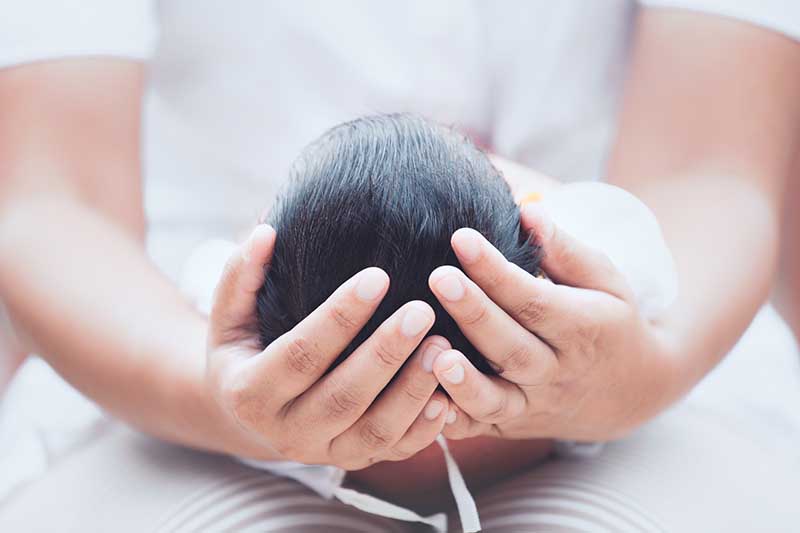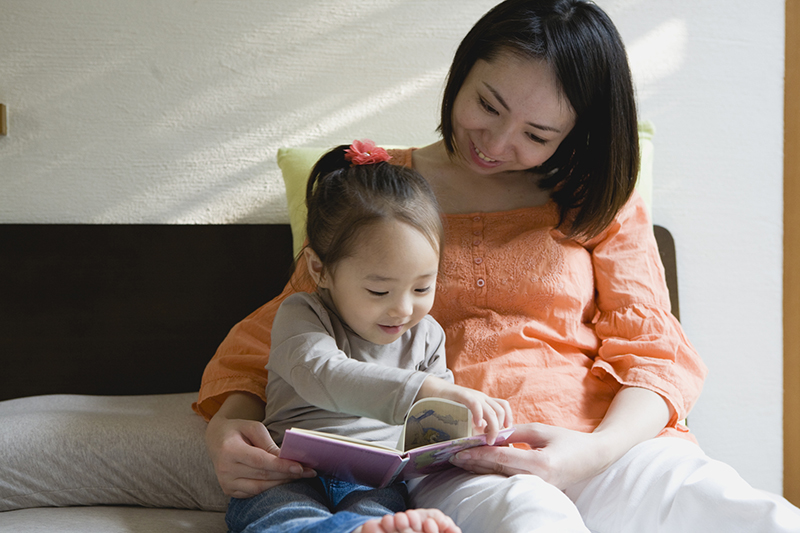Families For Life | Developing Literacy-Babies

DID YOU KNOW?
Cradle cap is the oily, scaly crust that babies sometimes get on their scalps, in their body folds and on their torsos. Although cradle cap looks uncomfortable, it doesn’t usually bother your baby.
READ MORE

Literacy is most commonly understood as reading and writing. But before children can read and write, they need to learn about sounds, words, language, books and stories. You have a vital role to play in helping your child with early literacy development.
Encouraging literacy development
Literacy development is a vital part of your child’s overall development. It’s the foundation for doing well at school, socialising with others, developing independence, managing money and working.
But before your child learns to read and write, he needs to develop the building blocks for literacy – the ability to speak, listen, understand, watch and draw.
And as she gets older, your child also needs to learn about the connection between letters on a page and spoken sounds. For this to happen, she needs plenty of experience with:
pictures and objects – how you can use words to talk about them
letters and words – their shapes, sounds and names
sounds – how words can rhyme, begin and end with the same letters, be broken up into parts like syllables, be formed by blending different sounds and so on.
You can help with all these areas of your child’s early literacy development by:
communicating with your child
reading together
playing with rhyme and other sounds with your child
And the great news is that you can do this in ways that are fun for both of you.
The language experiences that children have before they start school form powerful brain connections. These connections are used for language, thinking and understanding. Without activities like talking, singing and reading, the brain doesn’t develop these important connections.
Communicating: its importance in literacy development
Back-and-forth communication with your baby helps to develop your child’s ability to speak, listen and understand as he gets older.
For example, you might notice your child responds to your smiles and baby talk. She might try to imitate your sounds and facial expressions. When you repeat your child’s early words, it encourages two-way conversation and helps your child learn words and build language skills.
Another example is singing with your child, which teaches him about the rise and fall of sounds. It also introduces him to the music and stories of his culture.
What you can do
Copy the sounds your baby makes and don’t be afraid to use baby talk. This is when you speak more slowly, let your voice rise and fall, and repeat and emphasise words. This helps babies understand how language is put together.
Sing with your child.
Talk with your child about the everyday things you’re doing and seeing together. For example, ‘Let’s get the washing now’, ‘Look at the red bird’ or ‘Yum, what a nice lunch we’re having’.
Talk about feelings and chat about whether your child is happy or sad. You can help by giving her words to describe her emotions. This can help her understand how others feel too.
Share stories with your child. You could share funny or interesting stories from your childhood or tell your child about your family’s past. You could take turns creating a story together.
Teach your child that words can be broken down into segments. For example, ‘man’ is made up of m-a-n. Also show how parts of spoken words can be blended to produce whole words. For example, r-u-n or r-un or ru-n makes ‘run’.
Listen to your child. Follow his lead and talk about things he brings up. If he asks a question, give him the chance to come up with answers before you step in. For example, if your child says, ‘What’s that box there?’, you could say, ‘What do you think it is?’.
Speaking more than one language has lots of benefits for children. Read our article on raising bilingual children for information and tips on supporting your bilingual child’s literacy development.
Reading: its importance in literacy development
It’s a good idea to read with your child often. It’s best to start reading from birth, but it’s never too late to begin. Reading with children from an early age helps them develop a solid foundation for literacy. It also promotes bonding and is good for your relationship with your child.
Reading with your child:
shows her that books can give both pleasure and information
helps her learn the sounds of letters in spoken language
helps her understand that stories aren’t coming from you, but from the words on the page – this teaches her about how the printed word works
helps her develop a larger vocabulary – books might use new or unfamiliar words
improves her thinking and problem-solving skills
can get your child thinking and talking about a new concept, an event or something that interests her.
What you can do
Choose interactive books like lift-the flap books, touch-and-feel books or books with rhyming or repeating words. You can borrow lots of different types of books from the library.
Encourage your child to hold the book and turn the pages. This helps him start to understand that the book should be a certain way up, and that pages are always turned in the same direction.
Slide your finger underneath the words as you read them, pointing out each word. This shows your child that we always start on the left and move to the right when reading English. You could ask, ‘Where should I start reading on this page?’ or ‘Do you know this letter?’.
Point out pictures and talk about the pictures your child points to.
Make the sounds of animals or other objects in the book – have fun!
Rhyme: its importance in literacy development
Rhyming is a great way to teach children the connection between the sound of a word and how it’s written.
What you can do
Play games that involve rhyming. Rhyming games help children appreciate beginning and ending sounds – for example, ‘cat, pat and mat’. You can play them at any time – in the car, while shopping or at the dinner table.
Play games that involve the sound and rhythm of words. You could try ‘I spy’ and tongue twisters like ‘She sells seashells by the seashore’.
Read rhyming books like The Cat in the Hat or The Gruffalo.
You might like to read about more activities to promote literacy. And if you’re worried that your child might be having early literacy difficulties, it’s a good idea to talk with a professional, like your paediatrician, your child’s early childhood teacher, or your General Practitioner (GP).
© raisingchildren.net.au, translated and adapted with permission
Explore more